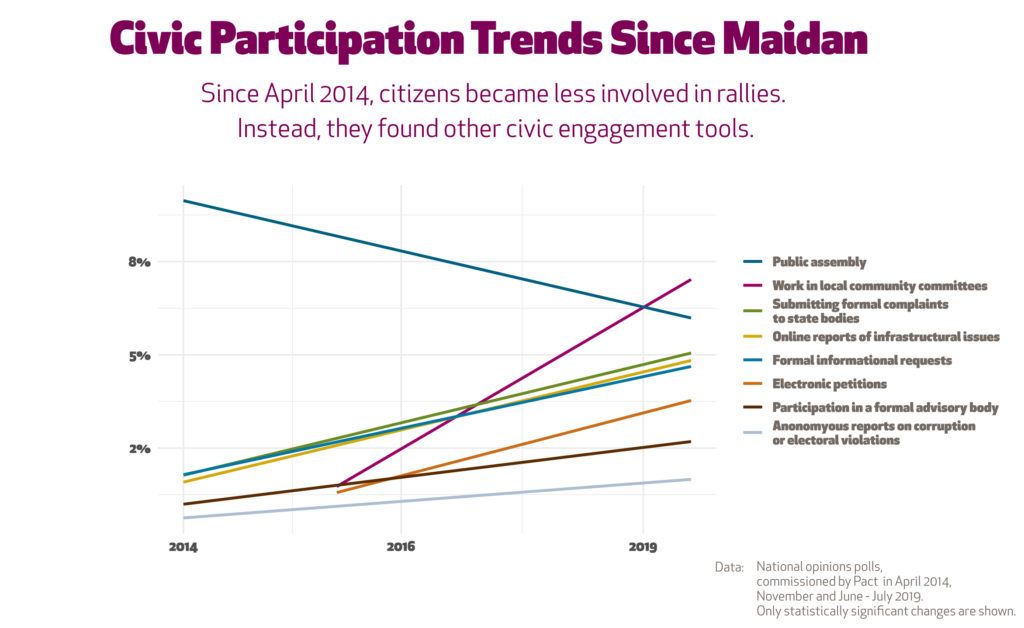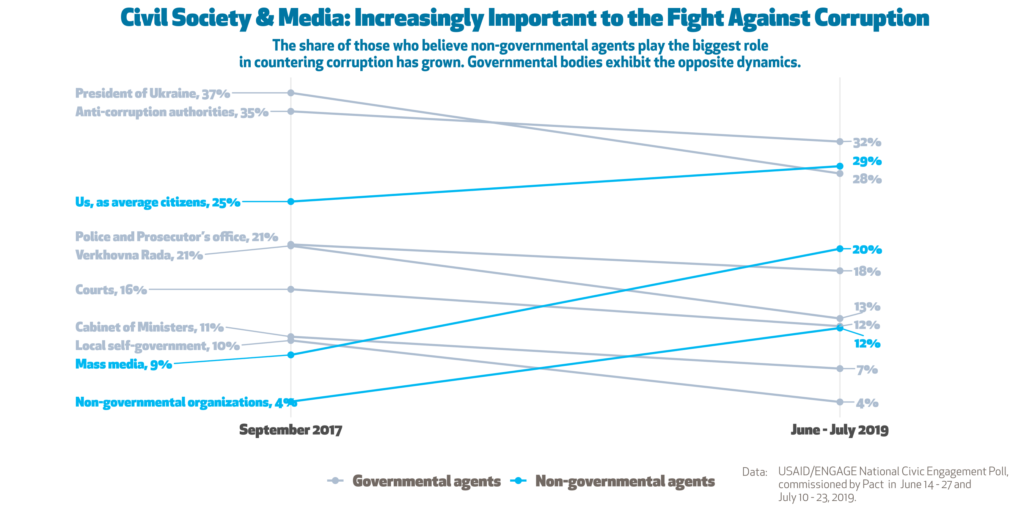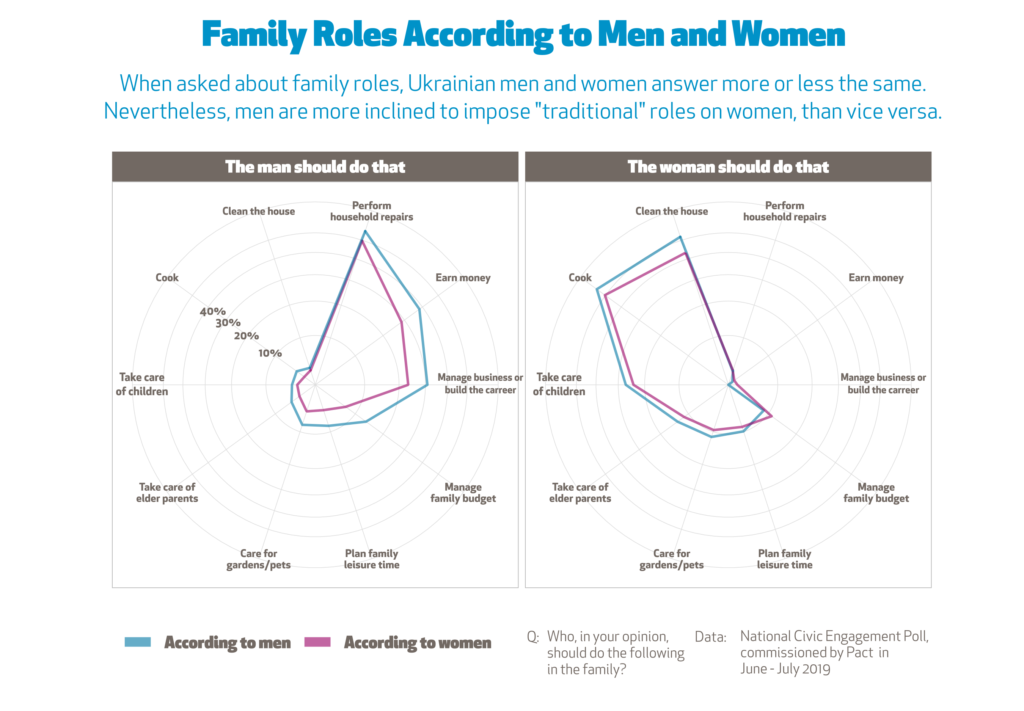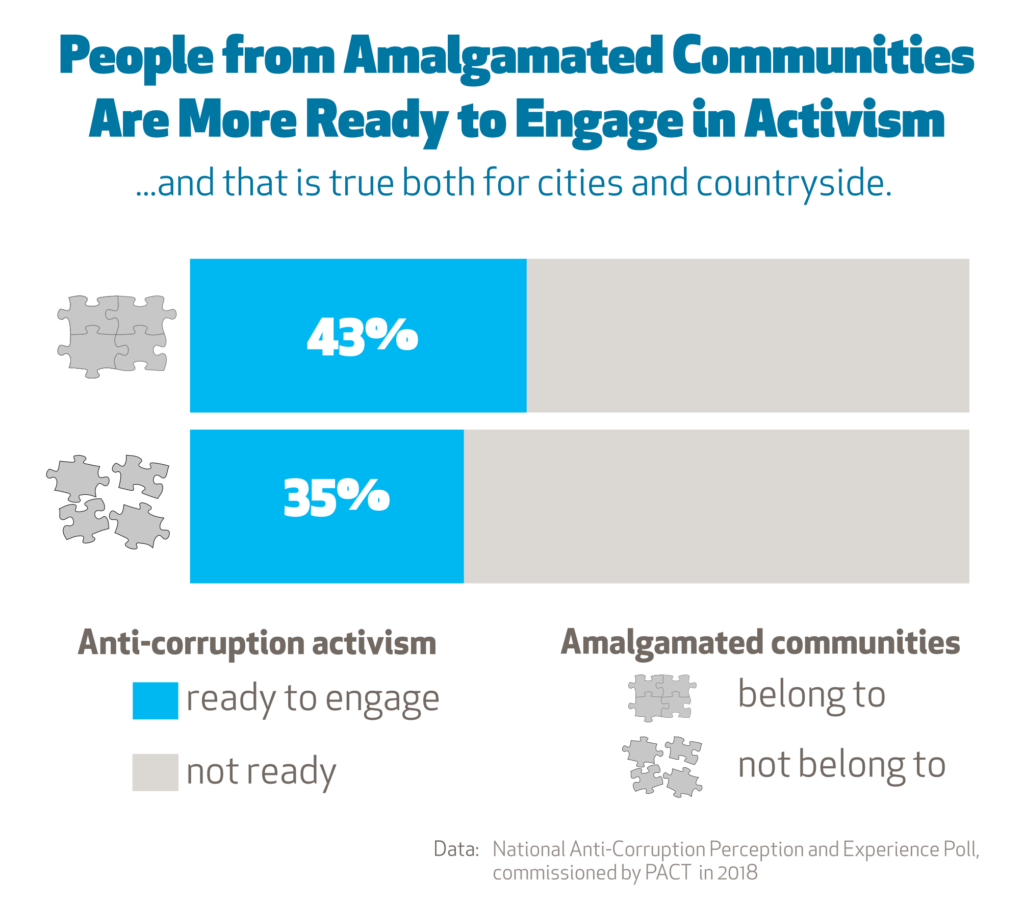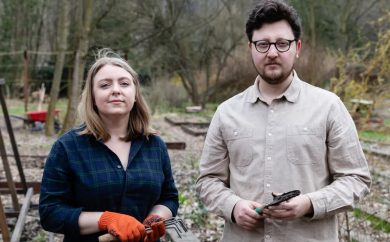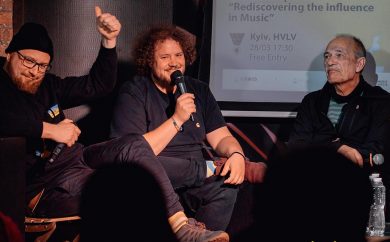In 2019, we decided to keep our audience informed by creating charts about USAID/ENGAGE activities every week. Below we have collected the ones that we consider to be the most interesting stories.
Maidan’s protest energy has been channeled into other activities. USAID/ENGAGE is aiming at increasing citizen awareness of and engagement in civic activities at the national, regional, and local levels. We looked at the tendencies since 2014 and saw that protests became less popular while citizens were using other ways to influence the situation instead.
Franklin Roosevelt is the most popular historical leader among Ukrainian school students. Civic education was in our focus, and, as we learned, supporting school courses brings the most significant results. In these courses, students not only gain theoretical knowledge but also get their first experience in decision-making. One of them was voting in a fictional presidential election, where historical leaders of different countries were the candidates.
The perceived role of non-governmental agents in fighting corruption has increased. Since 2017, citizens have started imposing a larger role in fighting corruption on non-governmental agents. Taking responsibility is always good, but will the CSOs and media be blamed if the perceived level of corruption stays the same?
The family roles of men and women are perceived quite differently. The old challenges of gender inequality remain: women are seen as responsible for cleaning, cooking, and taking care of children, while the men should be responsible for earning money, running businesses, and performing household repairs.
Living in an amalgamated community seems to be connected with a more significant level of anti-corruption activism. Surprisingly, we have noticed this connection. Maybe, the communities that manage to go through the process of amalgamation have a more active civil society? Or this process itself has made the inhabitants more responsible?

